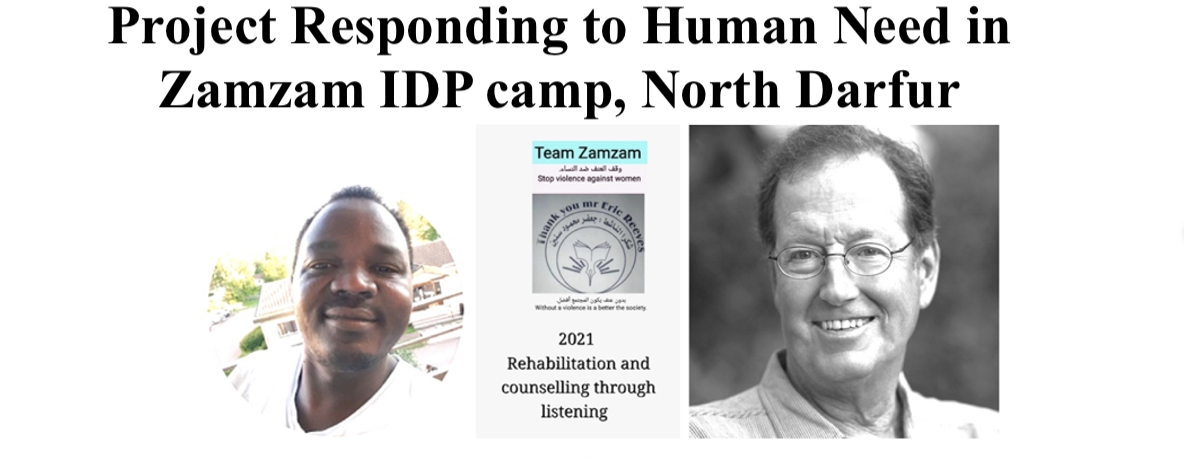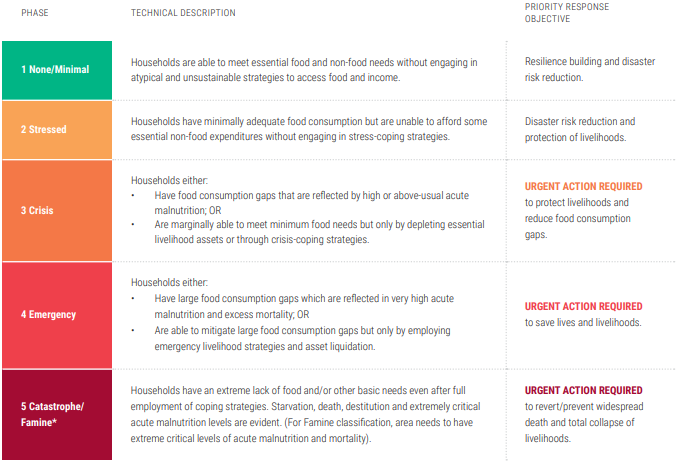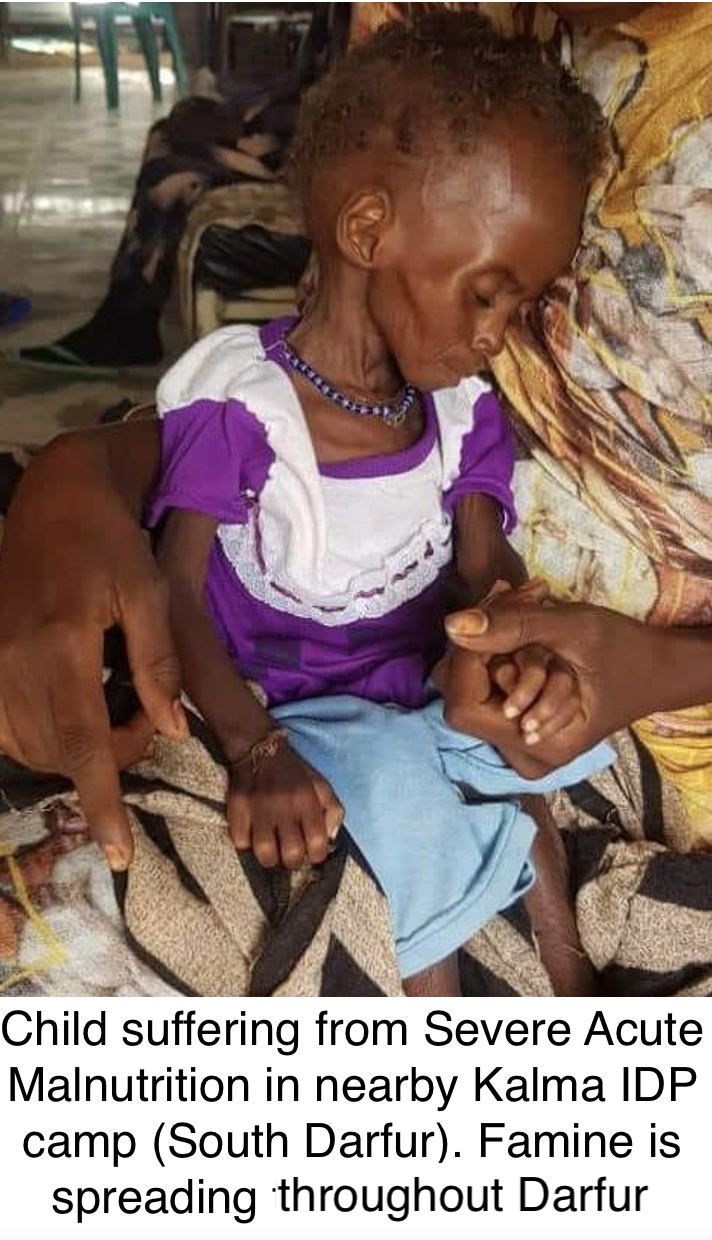April 22, 2024
As famine deepens in many quarters of Darfur, and as extreme insecurity continues to impede the movement of humanitarian convoys with desperately needed food and medicine, the response of Team Zamzam continues to save lives and mitigate suffering in Zamzam camp for internally displaced persons (IDPs), which may have a population as great as 450,000 civilians—primarily women and children.
[For an overview of ways to help Team Zamzam with its lifesaving work, please see the end of this update.]
Militarily, the tide appears finally to have turned against the Rapid Support Forces (RSF) in various parts of Sudan—including Darfur—although they remain a formidable threat to security for humanitarian operations. Even air drops of food are not possible from skies that constantly face the threat of RSF anti-aircraft fire.
Currently, the only other humanitarian organization operating continuously in this vast IDP camp is Doctors Without Borders/ Médecins Sans Frontières (MSF), which runs a clinic that is overwhelmed by the needs of camp residents. Greater medical resources are available in El Fasher (15 kilometers to the northeast), and Team Zamzam regularly escorts/provides transportation for people in the camp with medical needs. These include the three women/girls who receive reparative fistula surgeries in El Fasher every month.
While honoring the original mission of our project in Zamzam—providing psychosocial counseling for girls and women traumatized by extreme, finally genocidal sexual violence—the bulk of our funding for Team Zamzam is now devoted to purchasing food for the most needy within and near the camp. Alarmingly, food has become wildly costly in El Fasher as the small streams of food that have kept open the main market in the capital city are now drying up as a result of military activities in the area.
[Notably, the signatory rebel forces of the Juba Peace Agreement (October 2020) have abandoned any pretense of neutrality and are now actively fighting in concert with the Sudan Armed Forces (these include the forces of the Sudan Liberation Movement/Army (SPLM/A) of Minni Minawi and the forces of the Justice and Equality Movement of Gibril Ibrahim). In both cases the decision to abandon neutrality was driven by the military leaders within these movements, responding to increases in the brutal predations of the Rapid Support Forces (RSF), particularly in the El Fasher area.]
Until international humanitarian food deliveries have secure routes and a distribution system in place, the efforts of Team Zamzam will remain critical in the lives of many hundreds of the camp’s elderly, orphans, the disabled, and impoverished families headed by widows. As we are able, we will continue our program of rehabilitating water wells that no longer yield potable water: this month we completed our eighth such well, bringing clean water to as many as—by Gaffar’s estimate—15,000 people. Without clean water, many within the camp—already weakened by what is often acute malnutrition—will die from disease before humanitarian relief arrives.
Famine
As I have previously argued, famine has already begun in various locations in Darfur. While the technical threshold for some humanitarian definitions of the term may not be fully met in locations where there are means to collect data, there are far too few such locations. What reports we have suggest the widespread presence of malnutrition that meets the general terms of reference provided by the UN High Commission for Refugees.
“Households have an extreme lack of food and/or other basic needs, even after full employment of coping strategies. Starvation, death, destitution and extremely critical acute malnutrition levels are evident. (For Famine classification, area needs to have extremely critical levels of malnutrition and mortality.)”
The question of famine in inaccessible areas of Darfur is, for obvious reasons, unanswerable. But we do have a wealth of anecdotal information—some coming from assessment missions by Team Zamzam outside the camp, a good deal of it from people newly displaced by violence. And we do have a series of exceedingly grim accounts from the humanitarian community:
At the beginning of February 2024, FEWSNet (the Famine Early Warning Systems Network) declared: “some households [particularly in Darfur] are expected to deteriorate to Catastrophe (IPC Phase 5),” which includes “famine.” Two and a half months after the NEWSNet warning, food security conditions continue to deteriorate with rapid acceleration.
Also in early February, an MSF epidemiological assessment of Zamzam camp found that:
“The emergency threshold for moderate and severe acute malnutrition combined (the Global Acute Malnutrition rate, or GAM)—which indicates that urgent action must be taken—is 15 per cent, making it clear that a serious emergency situation is present in Zamzam camp. What we are seeing in Zamzam camp is an absolutely catastrophic situation. We estimate that at least one child is dying every two hours in the camp.”
Five weeks ago, Save the Children offered an estimate of what the toll of country-wide famine in Sudan would be (again, the food security situation—particularly in Darfur—has further deteriorated during this time):
“Nearly 230,000 children, pregnant women and new mothers could die in the coming months due to hunger unless urgent, life-saving funding is released to respond to the massive and worsening crisis in Sudan.”
For its part, UNICEF warned—again in early February 2024—that “700,000 children in Sudan were likely to suffer from the worst form of malnutrition [Severe Acute Malnutrition] this year, with tens of thousands who could die.”
FEWSNet offered a comprehensive account of food shortages and the disruption to food production, imports, and distribution in its February Sudan overview.
In mid-April, UN OCHA estimated that “4.9 million people are on the brink of famine” across Sudan, with most in Darfur.
*********
As I noted in last month’s Update (March 2024), assistance is urgently needed and will be deeply appreciated by Team Zamzam, and by the girls and women—indeed all camp residents—whose suffering they seek to alleviate. Here I should stress the tremendous efficiencies of food, hygiene, and medical purchases by a staff with extensive local knowledge. The importance of their deep understanding of where need is greatest within this vast camp, swollen with recent displacements caused by insecurity, cannot be overstated.
NB: It is now possible to make a tax-deductible contribution to our project, using a portal on the website of a 501/c/3 organization operating in Sudan. Operation Broken Silence, working primarily on health and education issues in the Nuba Mountains of South Kordofan, has created a special site for tax-deductible contributions to our project, and we hope this makes contributing to the health and well-being of girls and women in Zamzam as well as to others in desperate need.
We also hope that all will keep in mind our project as a whole operates with truly extraordinary efficiency, in ways matched by no humanitarian organization operating in Darfur that I am aware of, a region I have been researching for two decades. There is absolutely no overhead expense for this project.
Those wishing to assist in funding the work of Team Zamzam may also send a check directly to Eric (Eric Reeves, 31 Franklin St., Northampton, MA 01060).
OR
Purchase one of his woodturnings: https://www.ericreeves-woodturner.com/gallery
[The monthly report for March from the coordinating counselor for Team Zamzam will soon appear here.]





